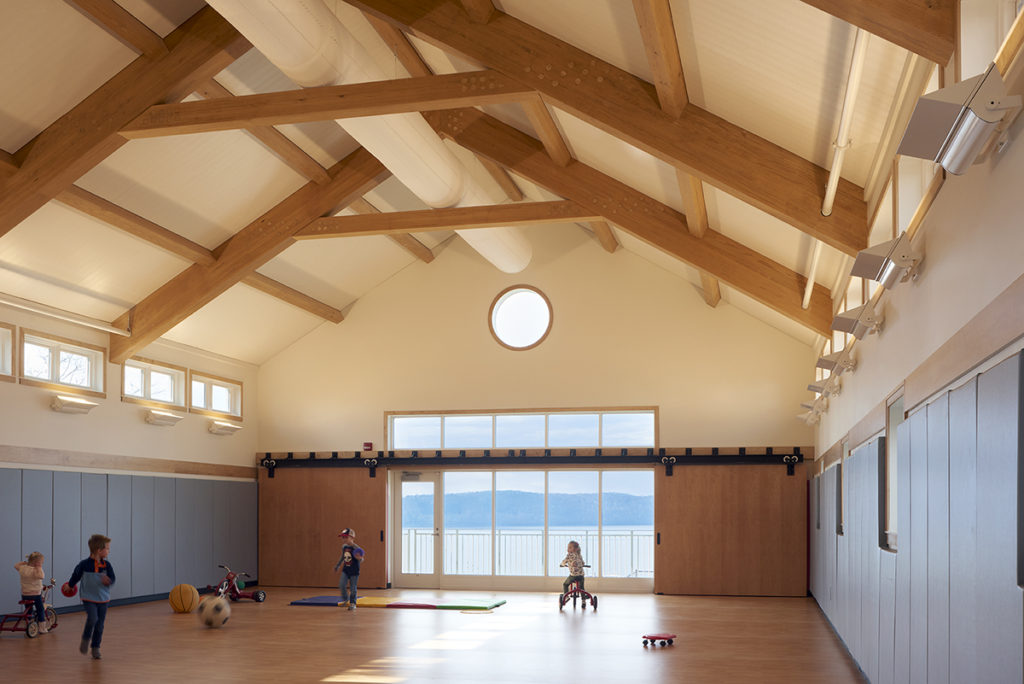

Location:Pleasantville, NY
Size:27,000 square feet
Completion Date:2008
Awards:AIA WHV High Honor Award
The Media Arts Lab at the Jacob Burns Film Center is a 27,000sf education center offering instructional programs in many forms of filmmaking and multi-media production. The Film Center’s mission is grounded in developing 21st century literacy skills, including critical viewing and production skills which are essential for a generation growing up in a world in which media and technology are increasingly the way we communicate, participate in community and engage in democracy and the global economy. The demand for this program curriculum led the Film Center to launch a Campaign for 21st Century Education to provide for the design and construction of a “center for celebrating the stories that live in each and every person:” The Media Arts Lab.
The U.S. Green Building Council recognized the MAL for process and results in sustainable design by awarding it with LEED Gold certification. Key sustainable features of note include extensive day lighting, geothermal wells, photovoltaic panels, a green roofing system, low/no-flow plumbing fixtures, and local and recycled building materials. The facility was constructed on the site of an existing building which was deconstructed with 85% of the building materials being recycled. The owners were motivated by the concept that a building itself could function as an educational tool and “green fact” signs throughout the building call out sustainable features and elements with explanations and notes on the impact of choices.
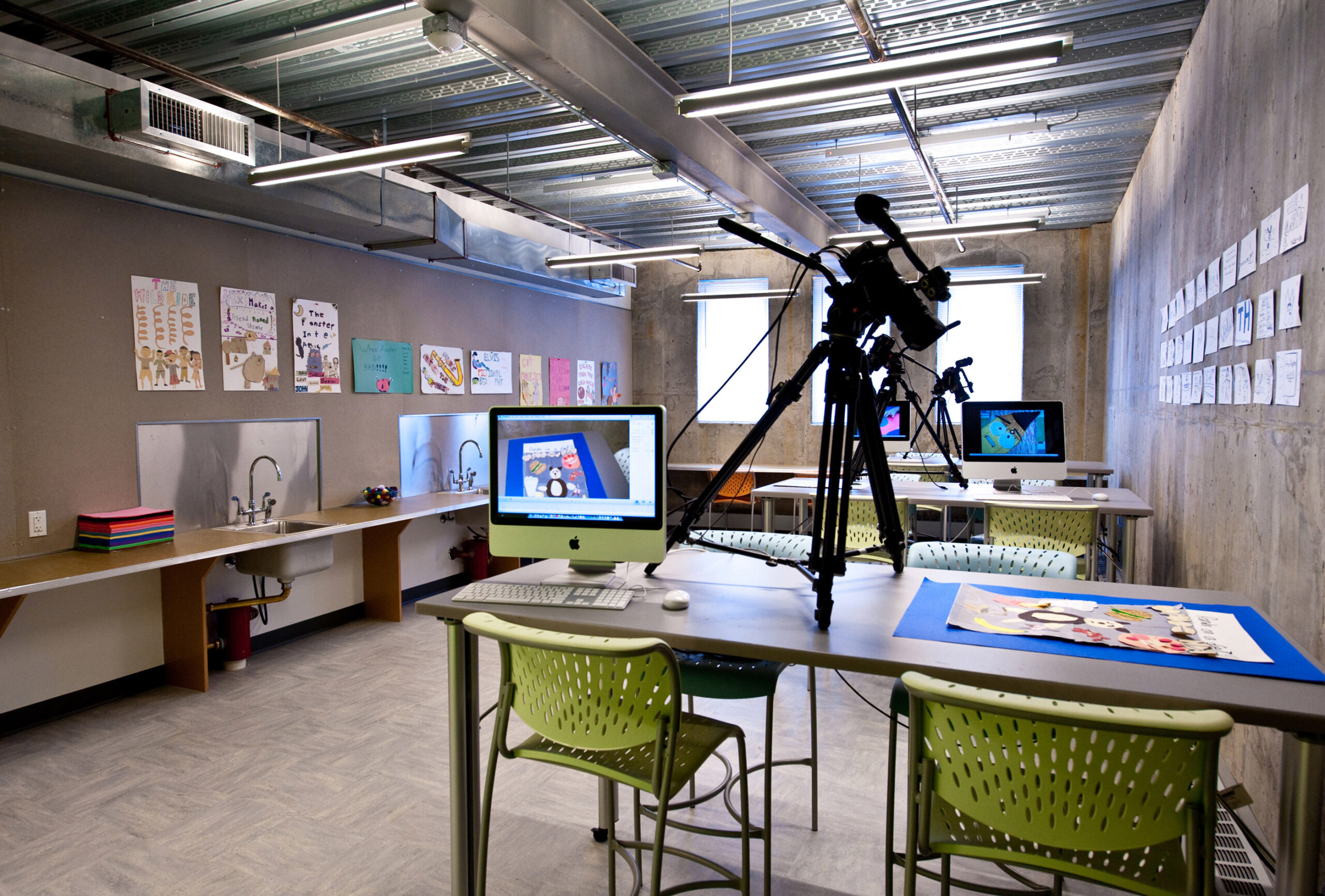
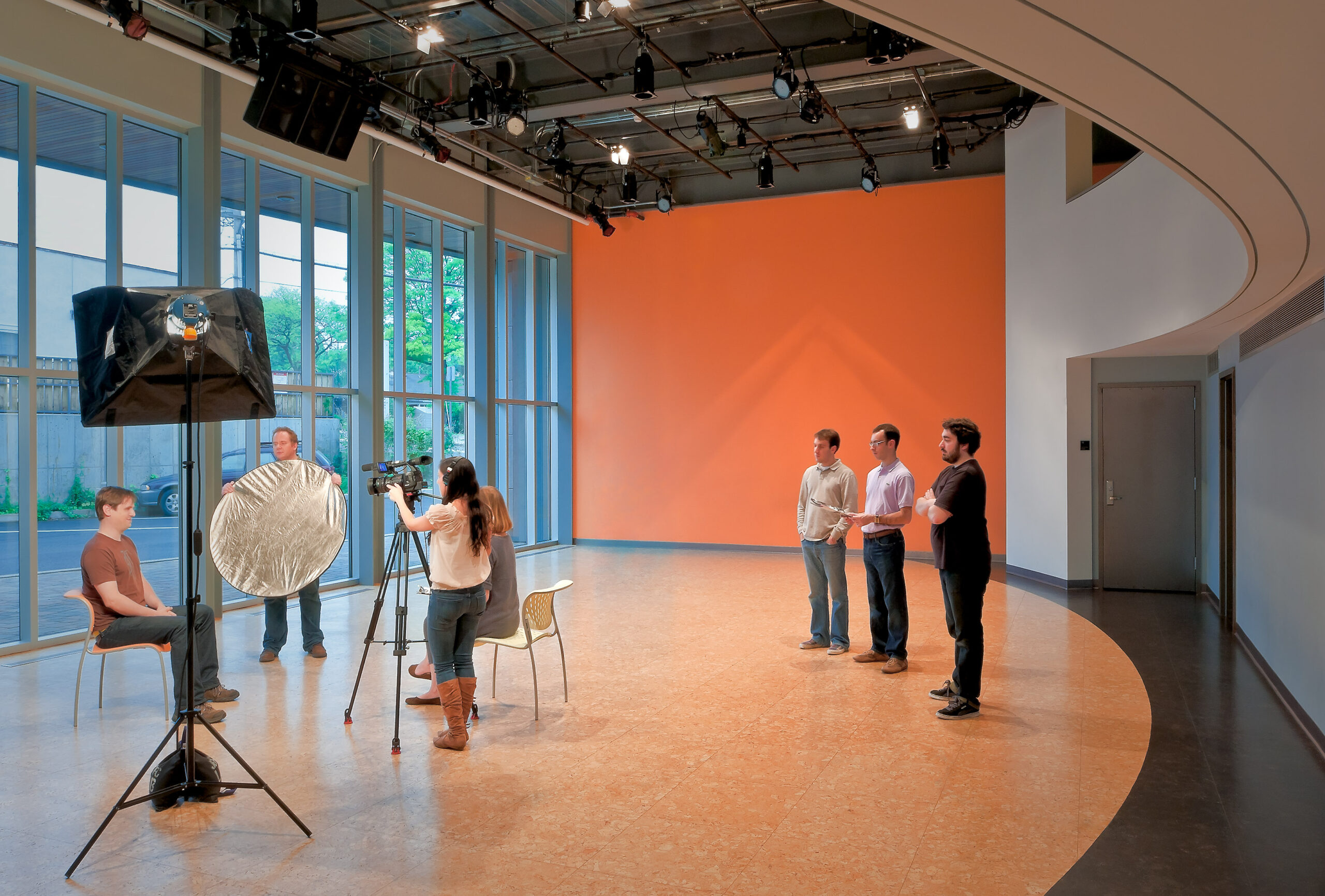
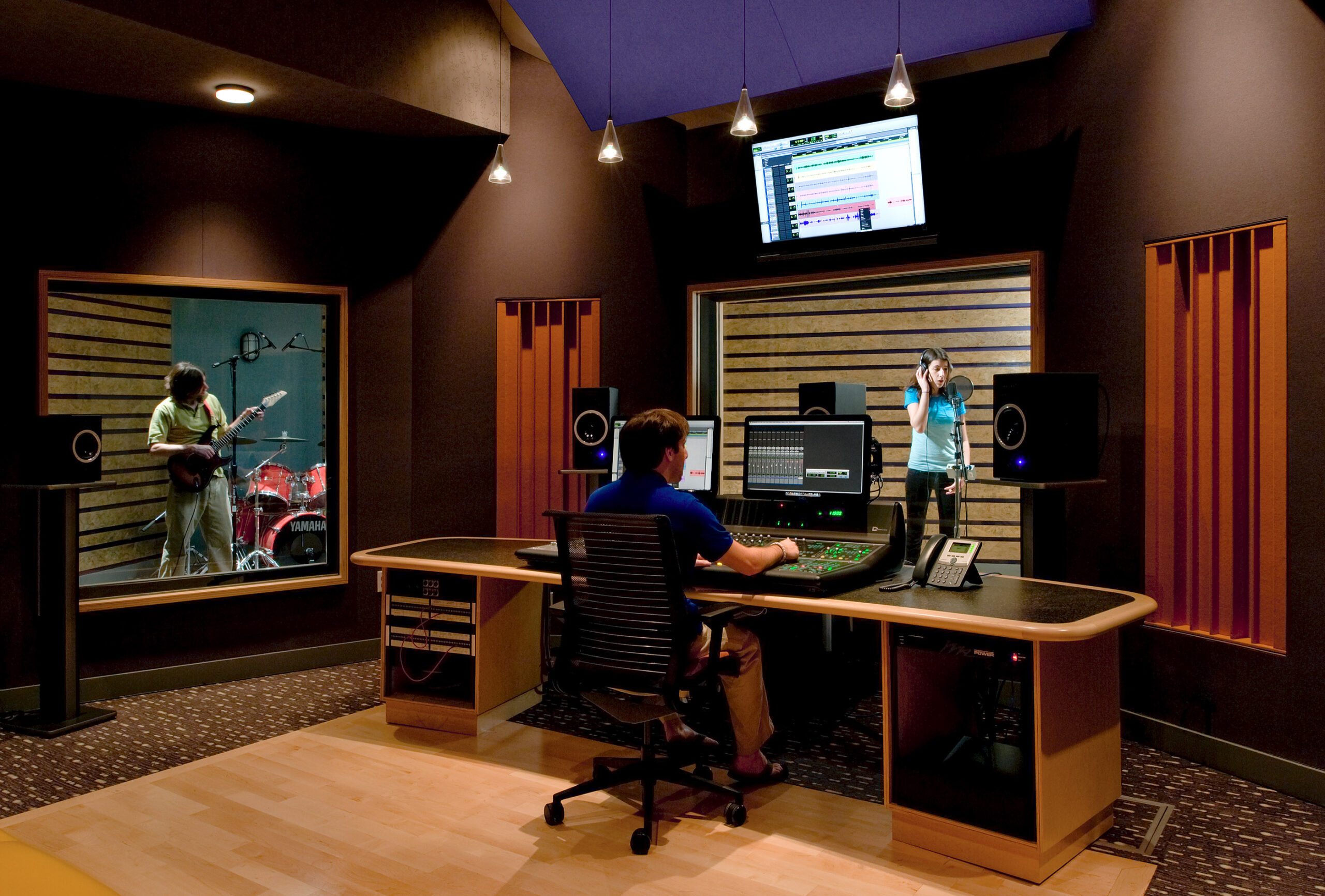
Animation lab, central studio, and recording studio.
Major program spaces include a recording studio, sound stage and Foley room, a 60-seat screening room, 16 editing suites, animation labs and classrooms, shop space, executive offices and multi-purpose central studio for gatherings and events. The roof top provides a terrace where photovoltaic panels and vegetative green roof can be viewed as well as occasional film screening events.

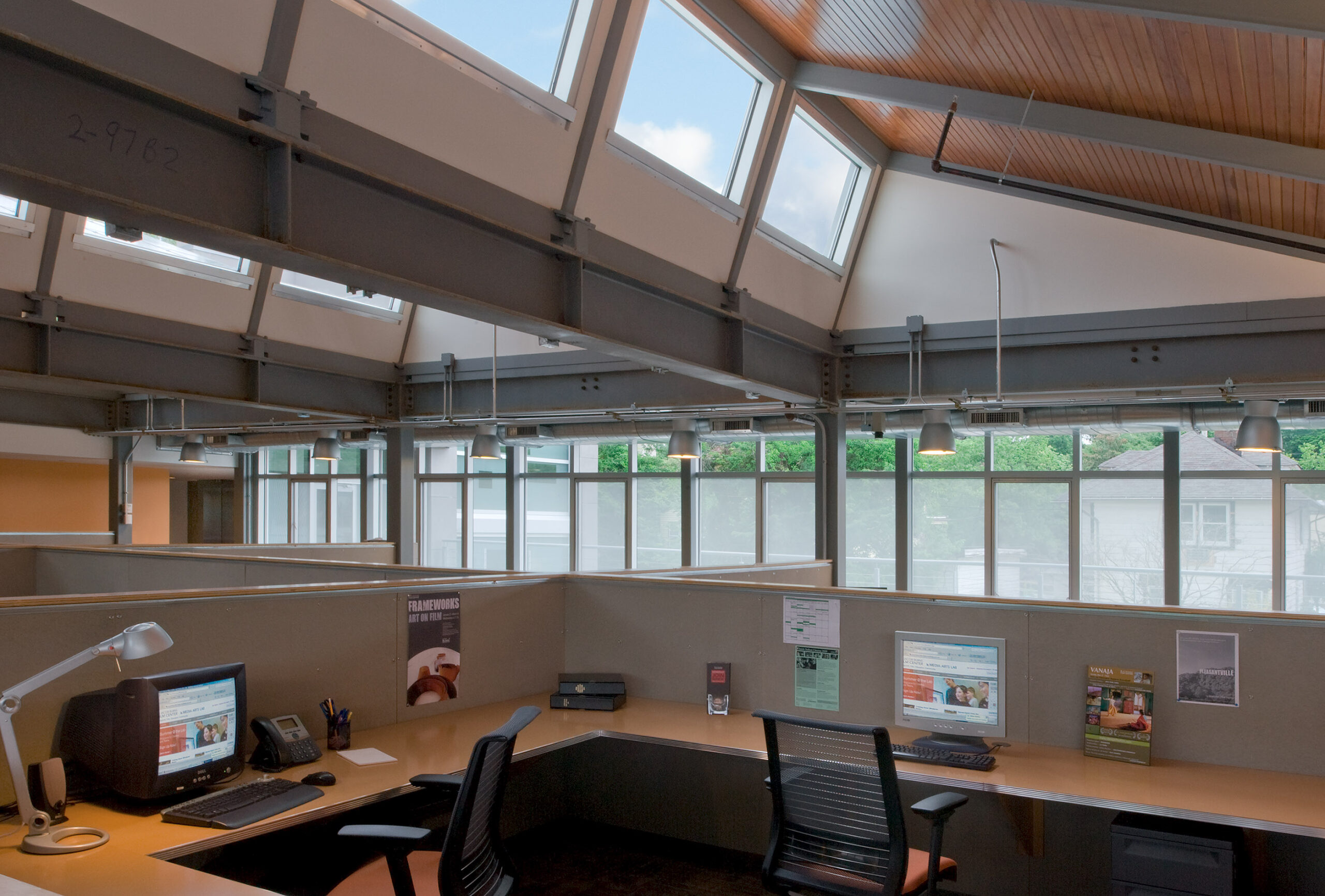
Saw tooth green roof and office daylighting.
The roof features a saw-tooth design with windows overlooking the executive office space below, allowing natural light into the central office area. This feature eliminates the need for artificial lighting in the office during the day.
Exterior materials include pre-cast concrete panels, zinc-coated copper detailing, wood soffits, clear and fritted glass, and anodized aluminum. Feature wall panels are an integral color pre-cast concrete to have the appearance of cor-ten steel with LED light strips. Etched glass reduces heat gain, and landscaping was designed to be indigenous and to have no irrigation requirements.
The interior design provides a playful combination of color and forms to unify different functions and aid in the visual connection of spaces. One theme that is repeated within the design is the idea of the ‘viewing window.’ As though framed by a slide or still image, the window openings frame views which aid in focusing community attention on spaces and details in a similar way to a film director. Ultimately, the building expresses the desire to teach about media literacy, film making and sustainability within a spiritually engaging environment.